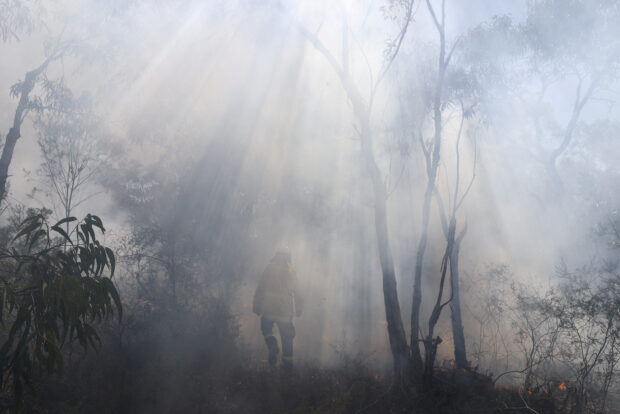
A firefighter walks through a wall of smoke as New South Wales Rural Fire Service personnel conduct a controlled burn to eliminate fuels before the upcoming bushfire season in the Arcadia suburb of Sydney, Australia, September 8, 2020. REUTERS FILE PHOTO
SYDNEY– Australia faces an increased risk of bushfires during the approaching summer, authorities warned on Thursday, with the El Niño weather pattern expected to generate hotter and drier conditions across large swathes of the country.
Three years of incessant rain has increased vegetation, but the intense heatwaves common during Australia’s December-February summer can quickly turn this into tinder-dry bushland, fueling fires. Climate change has amplified the country’s weather extremes in recent years, experts say.
“Compared with the spring outlook, more capital cities are now facing increased risk,” Emergency Management Minister Murray Watt said in a statement, urging residents to update their bushfire plans and pack emergency and evacuation kits.
Australia sweltered in an intense spring heat wave in September that sparked dozens of bushfires, prompting authorities to issue a fire ban for Sydney, though recent rain across the east has doused many fires.
Those record dry conditions and above-average temperatures are expected to continue well into 2024, the National Council for Fire and Emergency Services said in its bushfire outlook on Thursday.
Some areas burnt during the 2019-20 “Black Summer” fires, which destroyed an area the size of Turkey and killed 33 people, could come under threat again this summer, the report said.
Australia declared an El Niño weather pattern – which usually brings below-average rain and above-average daytime temperatures – was under way in September.
“We are now looking at a potentially very challenging summer ourselves. Everything we see now is happening in the context of climate change on a planet that is now hotter and more volatile,” said Simon Bradshaw, research director at the independent nonprofit Climate Council.
Even though rain set records in November for some places in Australia’s east, climate experts expect the coming bushfire season to be the worst in about four years.
The Bureau of Meteorology said it was not unusual to have wet weather during El Niño as it increases but does not guarantee drier conditions.